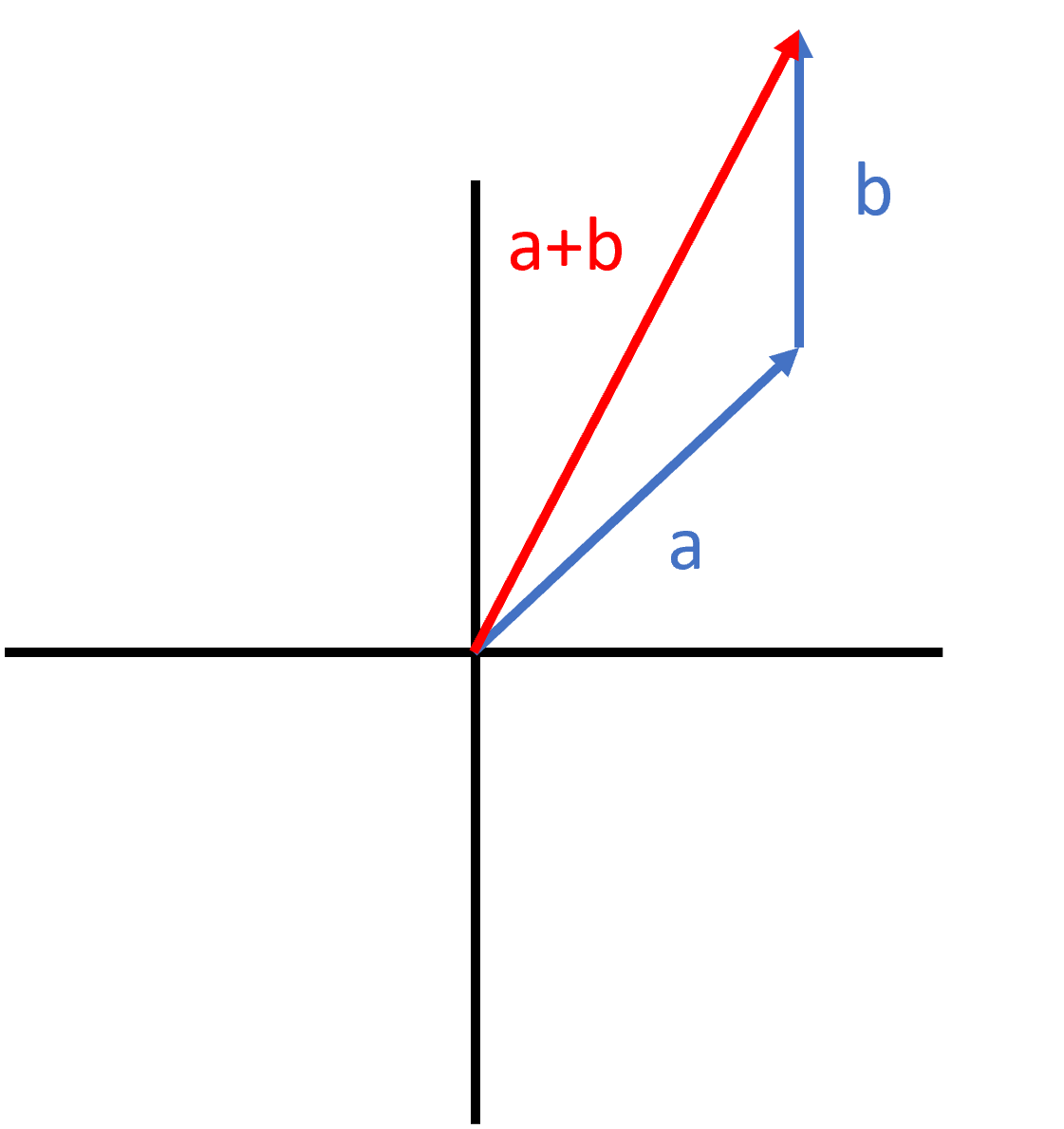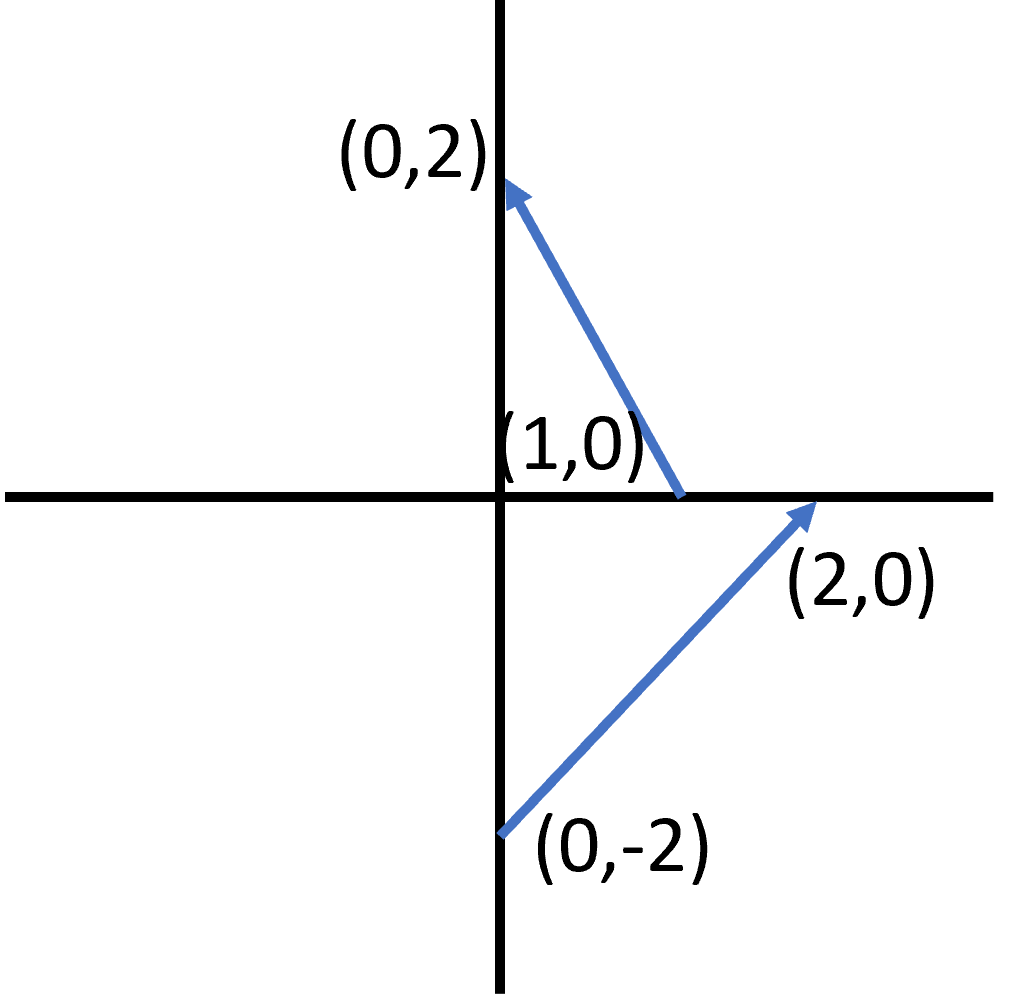Vectors are lines that have a size and point in a specific direction. The size of a vector is called its magnitude. In this chapter we will review an introduction to vectors, namely their notation and how to add or subtract them from one another.
Vectors are described using different variables from the usual ones we have seen. They are described using in place of and instead of . We also use the letters and in a mathematical form, instead of a usual coordinate point.
measures the distance that the vector travels in the direction, and measures the distance that the vector travels in the direction.
So, for a vector that begins at and ends at , we would express it in vector notation as . This expression tells us that the vector moves one unit to the right () and two units up ().
Try turning the following examples into vector notation:
A vector begins at and ends at
Equation:
A vector begins at and ends at
Equation:
A vector begins at and ends at
Equation:
When presented with multiple vectors, we add them by treating and as variables and combining their notations together into a single expression. Terms with will add together, and terms with will add together. Look at the following example:
What is the sum of the following vectors?

The first vector goes from to . This is an increase in of and an increase in of . In vector notation, we write .
The second vector goes from to . This has no change in , but it has an increase in of . In vector notation, we write . There is no because the position does not move.
To find the sum, we add the like components:
So, the sum of the two vectors is described by the expression .
To see the vector that would result from adding two vectors together, we simply connect the vectors from head to tail. Then, we draw a new vector from the starting point to the new ending point. This vector is the sum of the original vectors:

If and are the same vectors that we used in the previous example, the new vector goes from to giving us a vector . This is the same result we achieved by adding the equations together.
Subtracting vectors is very similar to addition. We take the terms from the first vector notation and subtract the terms from the second. terms will be subtracted from each other, and so will terms:

The first vector goes from to . This is a decrease in of and an increase in of . In vector notation, we write .
The second vector goes from to . This has an increase in of and an increase in of . In vector notation, we write .
To find the difference, we subtract the like components of the second vector from the first:
So, the difference of the two vectors is described as .
To find the vector that results from subtracting one vector from another, we will flip the vector that is being subtracted, then connect it from head to tail as above. Now, we draw a new vector connecting the starting point to the new ending point. This vector is the difference of the original vectors:

Sign up for free to take 3 quiz questions on this topic